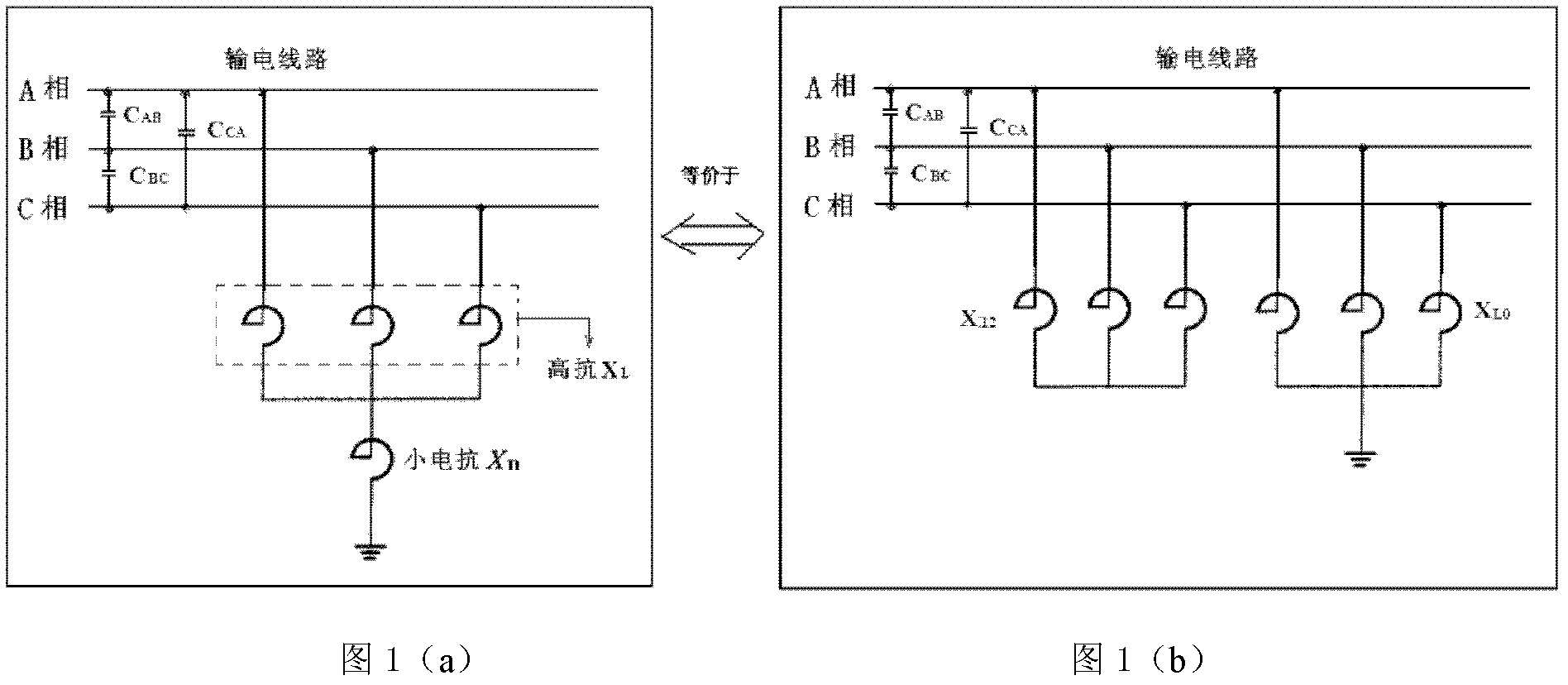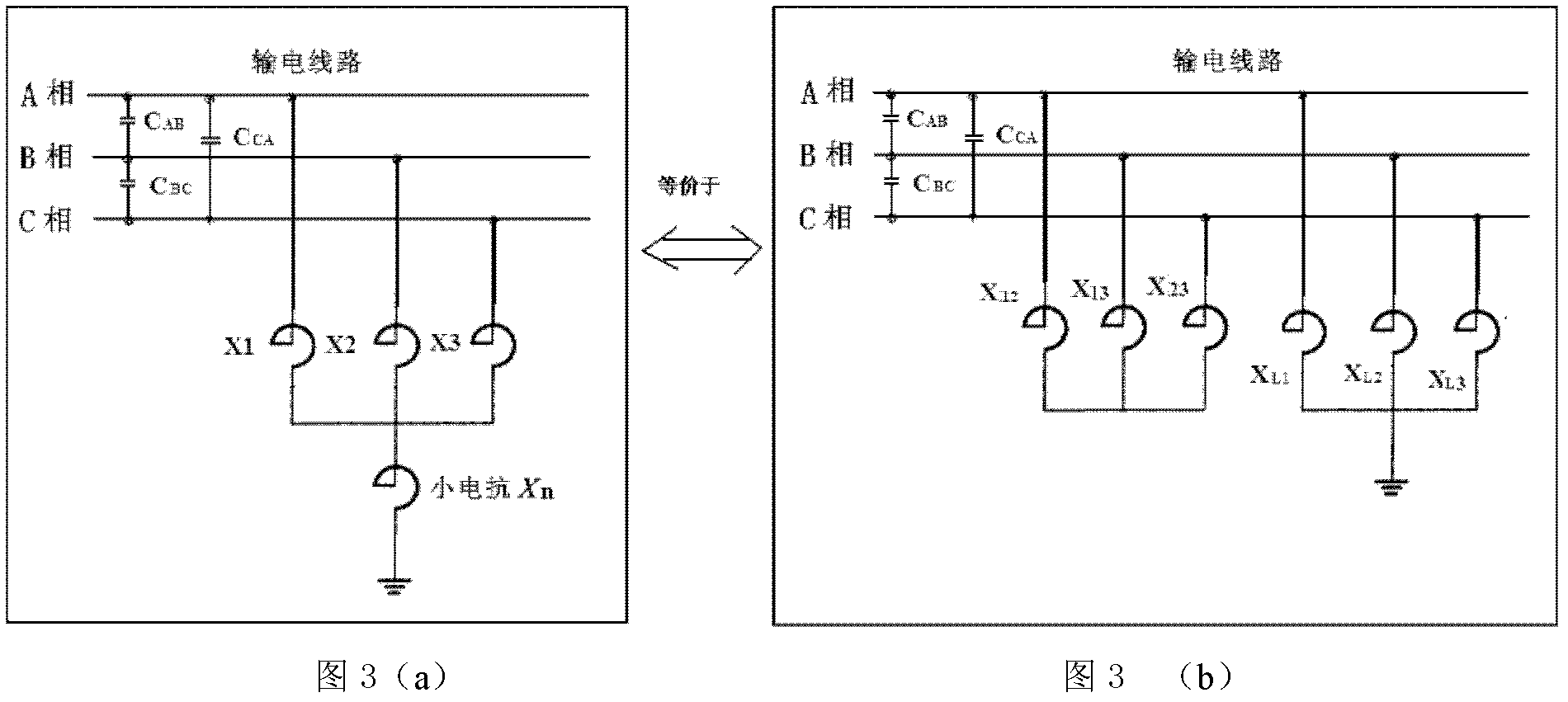Method for limiting secondary arc current for untransposed transmission line with extra-high voltage
A transmission line and submerged current technology, which is applied in the direction of emergency protection circuit devices, circuit devices, emergency protection circuit devices, etc. for limiting overcurrent/overvoltage, and can solve the problem of large submerged current of UHV non-transposition lines. problems, to achieve the effect of increasing the difficulty of manufacturing
- Summary
- Abstract
- Description
- Claims
- Application Information
AI Technical Summary
Problems solved by technology
Method used
Image
Examples
Embodiment Construction
[0020] Three-phase unbalanced high reactance plus small reactance is used to limit the submerged current of the non-transposition UHV line, and its wiring method adopts three-phase unequal high reactance at its neutral point and small reactance for grounding, as shown in Figure 3(a) Show.
[0021] Due to the distance between the three-phase wires (in l AB , l BC , l CA Indicates) are not equal, taking the horizontal arrangement of conductors as an example, l AB = l BC ≠l CA , then the phase-to-phase capacitance of the wires is not equal, that is, C in Figure 3(a) AB =C BC ≠C CA . To compensate for phase-to-phase capacitance, the relationship between phase-to-phase reactance in parallel with capacitance is X 12 =X 23 ≠X 13 , as shown in Figure 3(b). Reactance X in Figure 3(b) L1 、X L2 、X L3 Compensate the ground capacitance of the A-phase, B-phase and C-phase lines respectively; convert Figure 3(b) into Figure 3(a) equivalently. In this way, the solution of thre...
PUM
 Login to View More
Login to View More Abstract
Description
Claims
Application Information
 Login to View More
Login to View More - R&D
- Intellectual Property
- Life Sciences
- Materials
- Tech Scout
- Unparalleled Data Quality
- Higher Quality Content
- 60% Fewer Hallucinations
Browse by: Latest US Patents, China's latest patents, Technical Efficacy Thesaurus, Application Domain, Technology Topic, Popular Technical Reports.
© 2025 PatSnap. All rights reserved.Legal|Privacy policy|Modern Slavery Act Transparency Statement|Sitemap|About US| Contact US: help@patsnap.com



